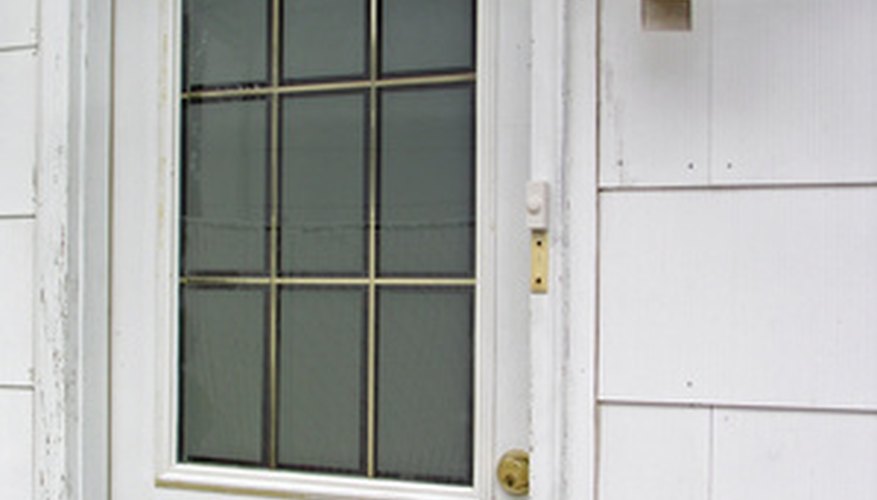Motion-activated lighting provides home security by deterring intruders, additional safety by illuminating traffic areas and energy conservation by providing light only when needed. Insurance companies sometimes offer rate reductions for homeowners using motion-activated lighting for security purposes. Malfunctioning motion-sensing lighting, however, serves no purpose at all. Such malfunctions require investigating the override features of a lighting fixture, which disable the motion sensor and allow for manual lighting control.
Locate a small toggle switch or sliding tab on the motion sensing light. This switch activates the manual lighting control of your fixture. The toggle switch or tab has three positions: auto, on and off. Move the switch from the auto or motion-activated setting to either on for continuous lighting or off for no lighting to disable the motion-control feature.
- Motion-activated lighting provides home security by deterring intruders, additional safety by illuminating traffic areas and energy conservation by providing light only when needed.
- Move the switch from the auto or motion-activated setting to either on for continuous lighting or off for no lighting to disable the motion-control feature.
Experiment with the switching function of the lighting fixture. Many are equipped with a bypass or override feature that controls the light switch. Entering this override mode involves a pattern of on-and-off signals controlled by the light switch. Try turning the light off at the switch and immediately back on to enter the override mode and use the fixture as an ordinary switched light.
- Experiment with the switching function of the lighting fixture.
- Entering this override mode involves a pattern of on-and-off signals controlled by the light switch.
Reduce the sensitivity of the motion-detector sensor to reduce unintentional triggering. Many motion-activating lighting units allow adjustments -- usually done with a small dial -- in the distance in which motion is detected. By increasing or decreasing this range, unintentional triggering can often be avoided, allowing the motion lighting to be used as intended.
Place a small strip of black electrical tape over a portion of the detector "eye" to block motion detection in certain areas and eliminate accidental triggering. As a last resort, cover the entire detector lens with electrical tape to disable the lighting feature altogether.
TIP
Air conditioning units, heating or dryer vents, or even heavy traffic or confined animals can generate enough heat to trigger the motion-activated sensor of a lighting unit. Consider repositioning the lighting fixture to eliminate unintentional triggering.
